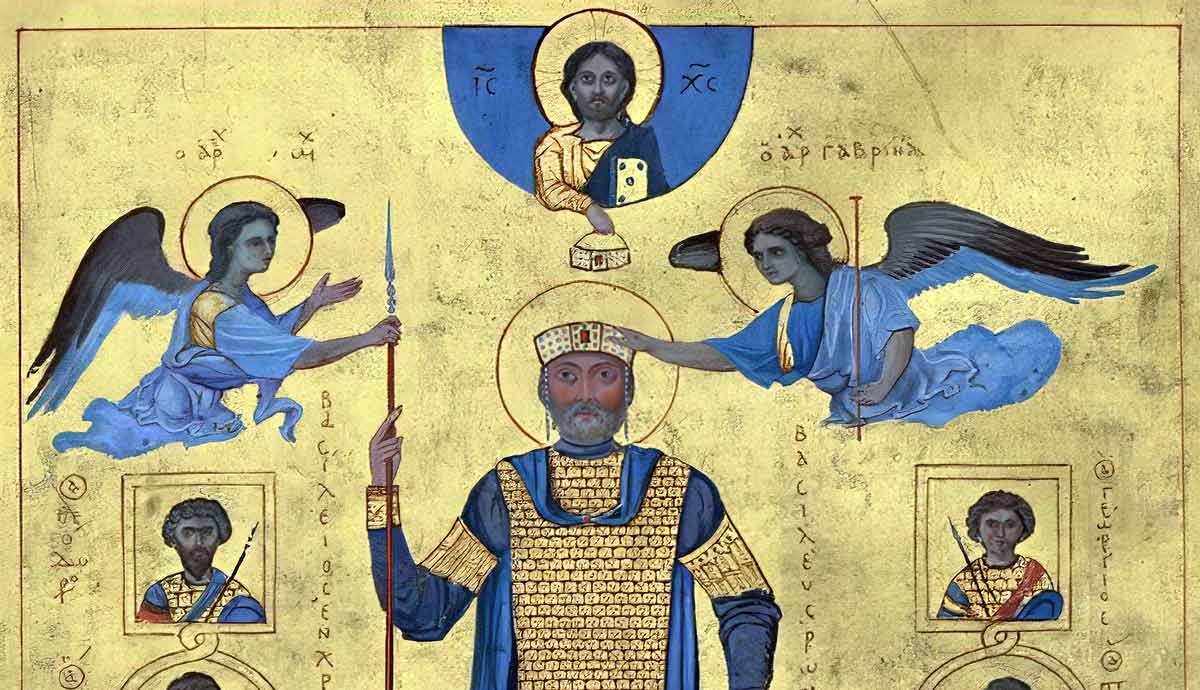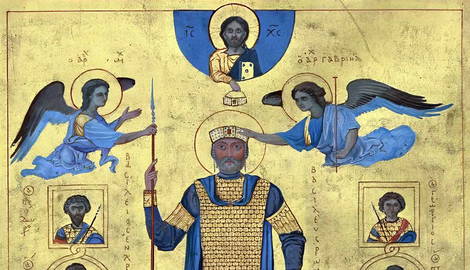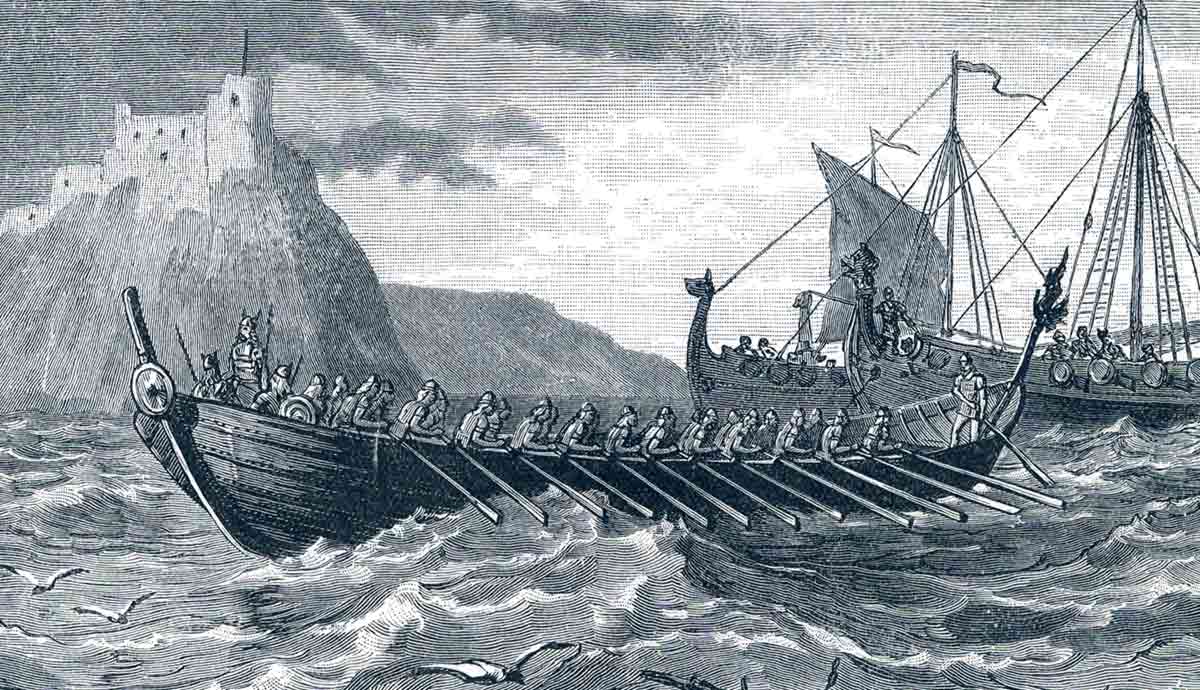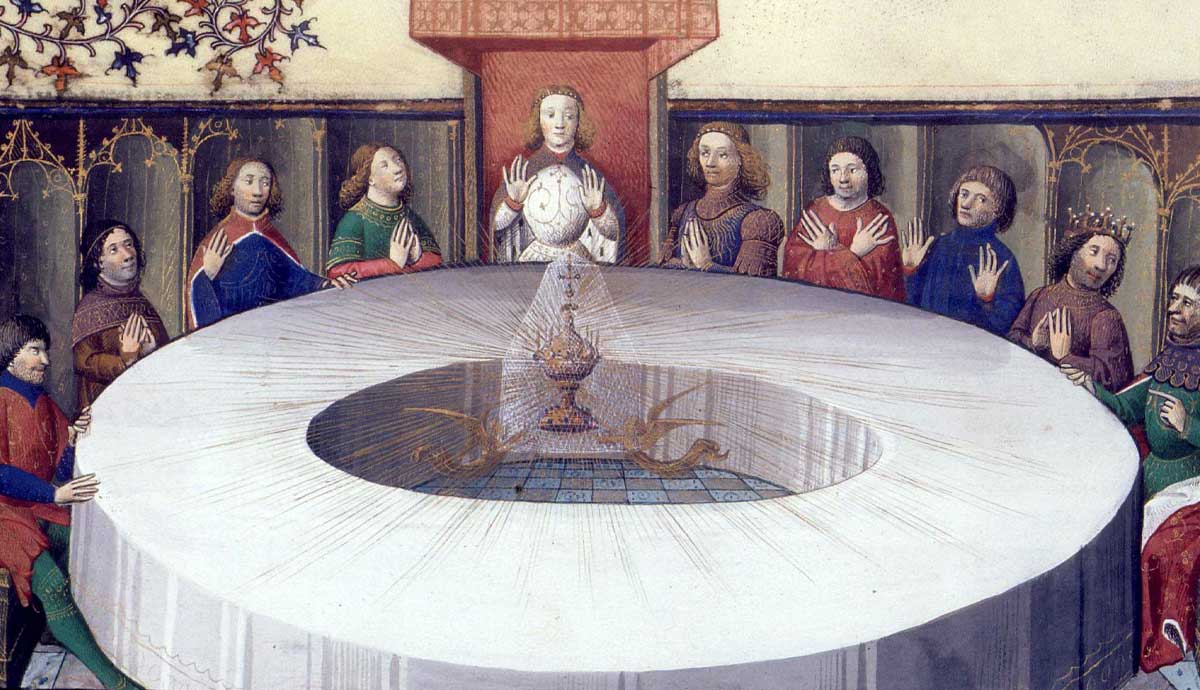
Basil II ruled the Byzantine Empire for almost half a century between 976 and 1025 CE. As a military leader, he broke the power of the First Bulgarian Empire and expanded his frontiers to Georgia, Armenia, and Mesopotamia. As a political reformer, he centralized power and replenished the imperial treasury. However, he died without an heir and the emperors who followed him lacked his abilities and struggled to defend the empire from the Seljuk Turks or the Latin Crusaders.
Basil’s Early Life

Basil was a member of the Macedonian dynasty, which ruled the empire for almost two centuries from 866 to 1056. The dynasty was founded by Basil I, a Macedonian peasant who became emperor after finding favor with his predecessor, Emperor Michael III.
Basil II was born in 958 to Prince Romanos and his wife, a Greek woman named Theophano. Basil’s father became Emperor Romanos II in 959, and the two-year-old Basil was crowned co-emperor the following year.
A fun-loving monarch who played too much polo, went out hunting night and day, and was fond of drinking, Romanos was not interested in government affairs and did not make much of an impression on Basil’s life (Lygo, p. 181). The Empress Theophano had far greater influence on her son. She dominated the brief reign of Romanos II, convincing her husband to exile his sisters to different convents and prevent their marriages into aristocratic families. She controlled government affairs with the assistance of her ally, the eunuch Joseph Bringas.
When Romanos died unexpectedly in 963, Basil and his younger brother Constantine VIII were too young to rule. As a result, the young monarchs were subject to cutthroat palace intrigue. Rulers were deposed, blinded, and exiled to monasteries if they displeased the officials who held the reins of power behind the scenes.
“The Pale Death of the Saracens”

Two generals, Nikephoros Phokas and his nephew, John Tzimiskes, provided military training and shaped Basil’s leadership style. After his father died in 963 CE, Basil watched his mother curry favor with the generals and arrange protection for him and his brother.
Nikephoros had built a reputation for grand victories. He returned Crete to Imperial control after an Islamic emirate had ruled there since the early 9th century CE. When Theophano became regent, she arranged a political marriage to Nikephoros. Then, she appointed him emperor, with the understanding that Basil would assume full power at age 18.
Emperor Nikephoros was beloved by his soldiers, who revered him as a warrior-monk. Soldiers praised his military strategies and nicknamed him “the Morning Star.” They followed him into battle wherever he led them (Lygo, p. 185). His prowess on the battlefield struck fear into the hearts of the Saracens, earning himself the nickname “The Pale Death of the Saracens.”
Nikephoros reveled in life on the battlefield. As an ascetic and pious man, he despised the luxury of the imperial capital and preferred campaigning against the empire’s enemies. Being very devout, he placed great value on holy relics and sought to bring examples back to Constantinople wherever he could find them.

Soon after marrying Theophano, Nikephoros returned to campaigning in Cilicia and Syria. After he annexed the Armenian state of Taron in 968, he turned his attention toward Tripoli. Later, he placed the city of Antioch under siege. Theophano celebrated the military triumphs, but wanted a younger, more handsome man to help her forget the loneliness of a widow’s life.
An opportunity for companionship presented itself in John Tzimiskes who was eager to share her company. Soon, a plot formed to remove Nikephorus from his role as Emperor. On the night of December 11, 969, a group of conspirators broke into the emperor’s chambers and assassinated Nikephoros as he lay sleeping (Lygo, p. 187). The inscription on his sarcophagus was fitting. It read, “You conquered all but a woman.”
John Tzimiskes Becomes Emperor

John Tzimiskes had to make multiple concessions to the Patriarch of Constantinople to be crowned with his blessing. First, he had to rid himself of Theophano. All the co-conspirators were punished, and previous increases in church taxes were reversed. The only one allowed to stay in place was a eunuch who was ironically called Basil.
Empress Theophano disappeared from historical accounts. Exiled to a remote part of Armenia, she left cursing and screaming at both John and the Patriarch. She remained in confinement until her son, Basil II, brought her back to the capital. John Tzimiskes built upon his uncle’s success with the church by strengthening the monks’ position on Mt. Athos and regularly donating money to help the poor, the sick, and the needy (Lygo, p. 190).
As emperor, Tzimiskes combined diplomatic and military tactics to defeat his enemies. He forced the Rus’ Prince Svyatoslav of Kyiv to agree to a face-to-face meeting and gained concessions for a peace treaty in Byzantium’s favor.
The last campaigns of Tzimiskes were focused on the area of modern day Israel, known as Palestine in the Byzantine era. From negotiations with Rus’ rulers or challenges from Arab armies in Syria, John met them as an emperor. He left a legacy as one of the most brilliant Byzantine generals and an exemplary emperor. The vicious murder of his uncle, Nikephoros Phokas, was the sole negative note sounded by critics.
Basil Assumes Full Power

When John Tzimiskes died in January 976, Basil II reached his majority and assumed full power as emperor. His younger brother and co-emperor, Constantine VIII, was content to stay out of imperial politics. Rather, he preferred the social aspects of palace life: attending banquets, planning hunts, and living a luxurious life in Constantinople.
As a young, untested emperor, Basil encountered rivals from powerful military families and threats from foreign enemies like the Bulgars or Islamic empires like the Fatimids. The initial threats came from two men connected to the army and the late emperors Nikephoros and John Tzimiskes.
The first, Bardas Skleros, waged a three-year civil war from 976 to 979. While Basil eventually defeated Skleros, his victory came at a high cost and diverted crucial military resources from the frontier. In 987 Nikephoros’ nephew Bardas Phokas launched another uprising. After two years, Basil vanquished Phokas and successfully consolidated his rule at home.
The Formation of the Varangian Guard

During the Phokas civil war, Basil negotiated an alliance with Grand Prince Volodymyr of Kyiv. His agreement included the marriage of his sister Anna to the Kyivan prince, who agreed to convert to Orthodox Christianity.
The alliance allowed Basil to strengthen his power, retain his throne, and deal with both rivals simultaneously. The Rus’ were vikings who originally came from eastern Scandinavia, and by the 10th century the princes of the Rurikid dynasty controlled a vast stretch of territory in present-day Russia, Belarus, and Ukraine.
Basil gained 6,000 Rus mercenaries from these regions. These soldiers became the Varangians, the emperor’s famous bodyguards. The Varangians were invaluable since they were foreign outsiders who had no local allegiance to the powerful families of Constantinople and were loyal only to the emperor. Basil organized them into an imperial regiment of elite troops. For the next two centuries, this unit would draw its recruits from Scandinavia, and they returned home with rich rewards from imperial service (Kaldellis, p. 100).
The Bulgar Slayer

By 989, the emperor was ready to expand his empire into the Caucasus, the Balkans, and Southern Italy. The city of Antioch was a crucial base for the eastern expansion of the empire, while in the west, he secured Venice’s maritime assistance against the Muslims of Sicily.
These diplomatic and military achievements were overshadowed by his conquest of the Bulgarian Empire under their fearsome Tsar Samuil. The tsar ruled a large part of the Balkans, and he had revived Bulgarian independence (Herrin, p. 216). To combat the Bulgarian ruler’s ambitions, Basil reorganized the administration of the imperial territories bordering Bulgaria.
Basil II campaigned against Samuil from 991 to 995. In 997 CE, his general, Nikephoros Ouranos, defeated the Bulgarians at the River Sperchios. To consolidate his victory, Basil returned to the region three times from 1001 to 1005 to put down local uprisings. Finally, a major Byzantine victory was achieved at Kleidion Pass in 1014, though the triumph was offset when another Byzantine army commanded by the local duke was defeated (Herrin, pg. 217).
In 1018, Basil defeated Tsar Samuil’s successor, John Vladislav, decisively at Dyrrachium (present-day Durrës, Albania). The Bulgar nobility realized that further hostilities were pointless. According to legend, Basil ordered several thousand enemy soldiers to be blinded as a demonstration of his ruthlessness. Such a barbarous deed would have undermined Basil’s efforts to incorporate the Bulgarian provinces into his empire. In fact, Basil II gave generous titles and land to defeated Bulgarian nobles, but he reduced their threat by relocating the most powerful men to the Anatolian regions far away from their homeland.

To mark his great victory over the Bulgarians, the Emperor journeyed to Athens. He held worship in the ancient Parthenon, now converted into a church, and gave thanks to the Holy Theotokos or Mother of God (i.e. the Virgin Mary). Basil presented splendid offerings taken from the Palace of Samuil in Ohrid.
After this visit, he returned to Constantinople, where he celebrated in the triumphal Roman fashion displaying the riches from the Bulgarian campaign and parading Samuel’s family in front of the people. At the end of his celebration, he entered the Hagia Sophia, the largest church in Christendom at this time, and thanked God for his success.
Basil II’s Legacy

Basil’s successes expanded and enriched his empire. He conquered Bulgaria, parts of Armenia, and Georgia, absorbing their elites into the imperial system. In true Byzantine fashion, he posted Iberians (Georgians) to the Balkans, Bulgarians to Vaspurakan, and kept Varangians always by his side (Kaldellis, p. 139).
Half a century after Basil’s death, the historian Michael Psellos described him as a model emperor for the army and the treasury. Still, Psellos noted that Basil scorned literature and intellectual life. Basil II was not remembered simply as the Bulgar Slayer. During his lifetime, he brought effective government, peace, and great wealth to the empire.
During his almost constant military campaigning, the emperor observed the dangerous results of landowners extending their property at the expense of poorer villages. He attempted to create laws against this to help the poor under his rule.
Basil failed in one respect: the succession. Basil never married and remained childless. While his well-established administration continued beyond Constantine VIII’s brief sole reign, the male line of the Macedonian dynasty died out with Constantine in 1028.
Basil II’s legacy rests in his ability to subdue rivals that threatened his rule: external powers such as the Bulgarians; ambitious generals in his military; factions within the imperial court, noble families, the Church; and popular discontent in Constantinople. These centers of power returned in force during the 11th century as soon as they sensed weakness around the throne. As a result, none of Basil’s successors enjoyed as much power as he did (Kaldellis, p. 141).
Bibliography
Herrin, J. (2008). Byzantium: The Surprising Life of a Medieval Empire. Penguin Books.
Kaldellis, A. (2017). Streams of Gold, Rivers of Blood. Oxford University Press.
Lygo, K. (2022). The Emperors of Byzantium. Thames & Hudson.










